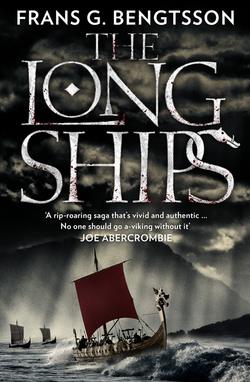Читать книгу The Long Ships: A Saga of the Viking Age - Michael Meyer - Страница 8
TRANSLATOR’S NOTE
ОглавлениеThe action of The Long Ships covers, approximately, the years A.D. 980–1010. At that time, the southern provinces of Sweden belonged to Denmark, so that Orm, although born and bred in Skania, regarded himself as a Dane.1
The Vikings harried the countries of northern and western Europe more or less continuously for a period of over 200 years, from the end of the eighth century until the beginning of the eleventh. Most of the raids on western Europe were carried out by Danes and Norwegians; for the Swedes regarded the Baltic as their domain, and founded a kingdom in Russia at the end of the ninth century which endured for 350 years, until the coming of the Mongols. Ireland was, at first, the favourite western hunting-ground of the Vikings; it was not until 838, forty years after the first attack on Ireland, that they began to raid England in large numbers. For the next sixty years, however, they – especially the great Ragnar Hairy-Breeks and his terrible sons – troubled England cruelly, until Alfred withstood them and forced them to come to terms. Then, from 896 until 979, England enjoyed eighty years of almost unbroken respite from their fury. In France, the Northmen were so feared that, in 911, Charles the Simple ceded part of his kingdom to them; this came to be known as Normandy, the Northmen’s land. Vikings peopled Iceland in 860, and Greenland in 986. In the latter year a Viking ship heading for Greenland went off its course and reached America, which, because of the good grapes they found there, the men named ‘Wineland the Good.’ Several other Viking ships sailed to America during the next twenty years.
The Battle of Jörundfjord, or Hjörungavag, so frequently referred to in the following pages, was one of the most famous battles fought in the north during the Viking Age. It was fought between the Norwegians and the Jomsvikings. The Jomsvikings (to quote Professor C. Turville-Petre) were ‘a closed society of Vikings, living according to their own laws and customs. None of them might be younger than eighteen years, and none older than fifty; they must not quarrel among themselves, and each must avenge the other as his brother.’ No woman was allowed within their citadel, Jomsborg, which was sited on the southern shore of the Baltic, probably in the region of where Swinemunde now stands. According to Icelandic sources, Canute’s father, King Sven Forkbeard, invited the Jomsvikings to a feast. As the ale flowed, King Sven swore an oath to invade England and kill Ethelred the Unready, or else drive him into exile. The Jomsviking chieftain, Sigvalde, swore in his turn to sail to Norway and kill the rebel Jarl Haakon, or else drive him into exile. All the other Jomsvikings, including the two Skanian chieftains, Bue Digre and Vagn Akesson, swore to follow him. They sailed to Norway with sixty ships, but Haakon got wind of their approach and, when at last they turned into Jörundfjord, they found him waiting for them with a fleet of no less than 180 ships. At first, despite being thus outnumbered, the Jomsvikings looked likely to prevail; but the weather turned against them and, after a bitter struggle, they were routed and slaughtered almost to a man.
This was in 989. In the following spring, another vital battle was fought in Sweden, on Fyris Plain before Uppsala, when the dreaded Styrbjörn, the exiled nephew of King Erik of Sweden, sought to win his uncle’s kingdom, but was killed by a chance spear in the first moments of the fight. It is to the echoes of these two battles that The Long Ships opens.
M.M.
